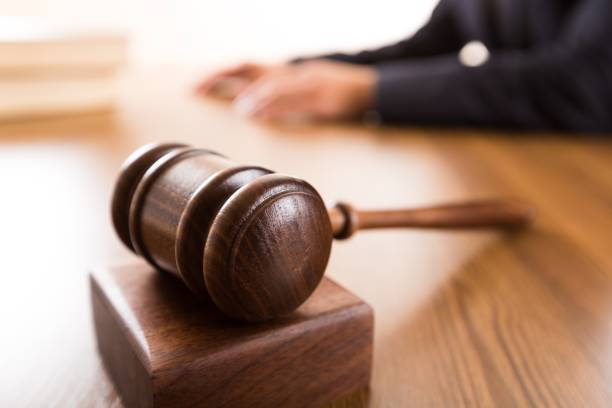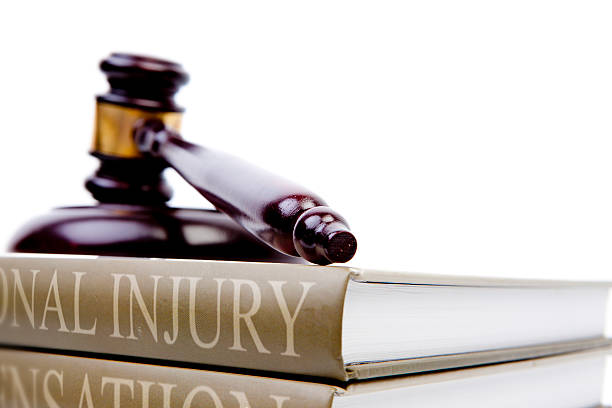A concept known as contributory negligence concept in law which applies to personal injuries. It is a legal term that means that when a plaintiff (the person who brought the suit) discovers that they contribute or contributed in some way towards their personal injuries or damages, they could be denied amount to the plaintiff (the entity or person that is being accused of being sued).
If, for instance, the plaintiff’s negligence was responsible for in the cause of the injury or accident and/or injury, they could be considered as a part of the blame and thus in a position to seek compensation against the other party.
This is due to the fact that contributing negligence presumes that the plaintiff was under the duty of exercising reasonable care to ensure their own safety. If they did not do this and caused harm, they are accountable for any harm that resulted.T
he concept of contributory negligence has been criticized as a controversial notion that has been questioned by many states, and a number of states have substituted it with a revised common law of negligence.
In the context of the concept of comparative negligence, a plaintiff is still able to claim damages even when they are partly responsible in their injuries however, the amount they receive could be reduced based on the level of responsibility.
The importance of avoiding contributory negligence is due to a variety of reasons:
Legal rights are protected: If you suffer injuries in an accident and you are considered to be at least partially responsible for the accident due to negligence of a contributor it is possible that you will not be entitled to compensation for your losses. This could leave you with massive financial burdens that include costs for medical treatment loss of wages, property damages.
Promoting responsible behavior: Through exercising the appropriate amount of care while avoiding contributing negligence, you will help to create a sense of responsibility and safety. This will help to avoid injuries and accidents from happening at all.
Insuring fairness: Contributory negligent can be interpreted as a skewed standard since it may completely prevent the plaintiff from pursuing damages, even if they are just a little responsible in the accident. By avoiding contributory negligence you can be sure that you’re treated with respect by your legal process.In the end, avoiding contributory negligence is a vital step towards safeguarding you from legal liability, encouraging responsible behavior, and insuring fairness in personal injuries.
By practicing prudent care, and taking steps to avoid injuries and accidents and injuries, you can you and the people in your vicinity from the negative effects of negligence that is contributory. Finding and limiting potential risks is a crucial step to making sure that you avoid contributing negligence. If you take proactive steps to reduce the risk of injuries and accidents it will lower your chance of being held to be at fault when you are involved in an injury claim.
Here are some suggestions for identifying and minimizing the risk of dangers:
Conduct a safety audit: Conducting a safety audit on your home, workplace and other places that you frequent can aid in identifying hazards. Check for signs of unfinished flooring, exposed wiring, or walkways that could be a risk to you or other people.
Be aware of safety rules: There are many industries that have safety rules and guidelines that are designed to avoid injuries and accidents. Be sure to be aware of these guidelines and follow them all the time.
Utilize the appropriate safety equipment: Wearing the right safety equipment can safeguard you from injuries and accidents. This could include things such as helmets, safety glasses gloves, and safety clothing.
Maintain your equipment and property properly: Maintaining property and equipment can avoid injuries and accidents. Be sure that the equipment is regularly checked to ensure it is maintained and the property is maintained in good condition.
Be aware of the surroundings: Being aware of your surroundings will assist you in identifying potential dangers before they turn into a problem. Pay attention to things such as slippery floors, low-hanging items, or other dangers that could be a risk for you or anyone else.
In identifying and minimizing the risks, you will assist in protecting yourself and others from injuries and accidents and decrease the chance of being blamed when you are involved in an injury claim.
Following the instructions and guidelines is a vital aspect of avoiding contributing negligence. When working with equipment or engaging in activities with inherent dangers, it is crucial to follow the directions and guidelines provided by the manufacturer professionals, experts, or any other experts.
Here are some helpful tips for following the guidelines and suggestions:
Be sure to follow the instructions thoroughly: Be sure to read and comprehend any instructions or manuals included with the item or task you’re engaged in. This will enable you to comprehend how to operate the equipment safely and efficiently.
Consult a professional: if you’re unsure of how to operate equipment or perform any activity in a safe way and safely, seek advice from a professional. It could involve consulting an authorized professional, for example, a doctor engineer, contractor or who can advise you on how to reduce the risk.
Use the equipment according to its specifications: Make sure you use the equipment as recommended by the maker. Do not alter equipment or make use of it in ways that aren’t suggested, as it could increase the chance of injuries and accidents.
Wear the right safety equipment: Wear the appropriate safety gear like helmets or safety goggles while participating in activities that carry inherent dangers. This will help you stay safe from injuries and accidents.
Stay current: Keep informed on any updates or changes to safety guidelines or suggestions. This can ensure that you’re engaged in activities responsibly and safely.
If you follow the guidelines and instructions, you can lower the risk of injury and accidents and decrease the chance of being blamed during a personal injury lawsuit. Moreover, you must first seek help and advice from a personal injury lawyer before taking an action. Darfoor Law Firm, one of the best in Florida will guide you with the best course of action.
If you are struggling, hurt, injured, or suffering due to negligence, call us at 1-833-DARFOOR to schedule your free consultation and case evaluation. We are always here to help you.




